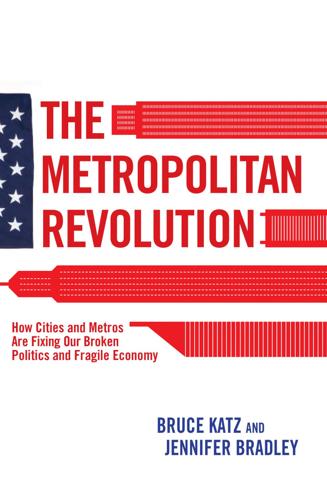
The Metropolitan Revolution: How Cities and Metros Are Fixing Our Broken Politics and Fragile Economy
by
Bruce Katz
and
Jennifer Bradley
Published 10 Jun 2013
“We can’t just sit here and let Silicon Valley beat us,” Mayor Bloomberg told a gathering of tech entrepreneurs in October 2011, as the responses to the request for proposals were coming in.60 But New York was not, in fact, seeking to transplant an entire industry or create a Silicon Valley East. The NYCEDC and the mayor’s office were clear that Applied Sciences NYC would be connected to the particular existing and emerging strengths of the city. As Enrico Moretti points out in The New Geography of Jobs, “Universities are most effective at shaping a local economy when they are part of a larger ecosystem of innovative activity.”61 Before launching a major economic development initiative like this, places need a sense of what that ecosystem is. In 2009 New York City had assets that were underperforming but moving in the right direction.
…
For example, areas with higher poverty rates experience, on average, slower per capita income growth rates than low-poverty areas.”48 The Nobel Prize–winning economist Joseph Stiglitz has written, “The bottom line that higher inequality is associated with lower growth— controlling for all other relevant factors—has been verified by looking at a range of countries and looking over longer periods of time.”49 The counterproposition, that a more skilled workforce accelerates economic growth, is found in (among other works) Enrico Moretti’s book The New Geography of Jobs, which came out in 2012. Moretti argues that metropolitan areas with a high percentage of well-educated workers also tend to attract more highly educated people—conversely, those with low levels of well-educated workers tend to bleed highly educated people. Moretti describes three Americas: At one extreme are the brain hubs—cities [by which Moretti means metros] with a well-educated labor force and a strong innovation sector.
…
Baum, and Maryann P. Feldman, “Industrial Clustering and the Returns to Inventive Activity: Canadian Biotechnology Firms, 1991–2000,” Working Paper 04-03 (Toronto, Ont.: Rotman School of Management, University of Toronto, 2004), p. 1. 19. Muro and Katz, “The New ‘Cluster Moment,’” p. 5. 20. Enrico Moretti, The New Geography of Jobs (Boston, Mass.: Houghton Mifflin Harcourt, 2012), p. 197. See also Margaret Pugh O’Mara, Cities of Knowledge: Cold War Science and the Search for the Next Silicon Valley (Princeton University Press, 2005). 21. See Muro and Katz, “The New ‘Cluster Moment,’” pp. 25–30. See also Mercedes Delgado, Michael E.
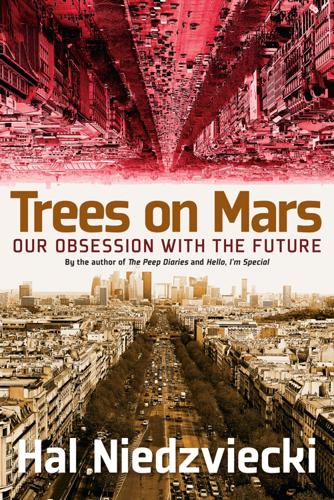
Trees on Mars: Our Obsession With the Future
by
Hal Niedzviecki
Published 15 Mar 2015
Ibid., 377. 23. Toffler, Future Shock. 24. Ibid., 379. 25. Moretti, The New Geography of Jobs, 33. 26. Edgerton, The Shock of the Old. 27. Lucas Mearian, “IBM Smashes Moore’s Law, Cuts Bit Size to 12 Atoms,” Computerworld, January 12, 2012, http://www.computerworld.com/article/2501259/data-center/ibm-smashes-moore-s-law--cuts-bit-size-to-12-atoms.html. 28. “AT&T Next - Get A New Smartphone Every Year from AT&T Wireless,” accessed April 24, 2015, http://www.att.com/shop/wireless/next.html. 29. Moretti, The New Geography of Jobs, 104. 30. Innerarity, The Future and Its Enemies in Defense of Political Hope, 42.
…
If the new media monoliths of the twenty-first century can be said to have put forth one cohesive vision, it’s this: own the future, or the future will own you. Or to put it another way: own the people who will shape the future, or they might end up owning you. Economist Enrico Moretti writes in his book The New Geography of Jobs: “Globalization and technological progress have turned many physical goods into cheap commodities but have raised the economic return on human capital and innovation. For the first time in history, the factor that is scarce is not physical capital but creativity.”23 It’s not strength we admire and seek to emulate in order to be seen as successful in our society.
…
“Poverty is no longer an issue of ‘them,’ it’s an issue of ‘us,’” says Mark Rank, a professor at Washington University in St. Louis who worked on the numbers for the AP article. “Only when poverty is thought of as a mainstream event, rather than a fringe experience . . . can we really begin to build broader support for programs that lift people in need.”17 In his book, The New Geography of Jobs, economist Enrico Moretti states: “For the first time in recent American history, the average worker has not experienced an improvement in standard of living compared to the previous generation. In fact he is worse off by almost every measure. On top of this, income inequality is widening.
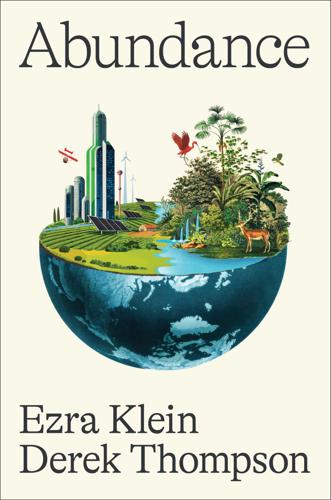
Abundance
by
Ezra Klein
and
Derek Thompson
Published 18 Mar 2025
Enrico Moretti, The New Geography of Jobs (New York: Mariner Books/Houghton Mifflin Harcourt, 2013), Kindle, loc. 1641. 19. Moretti, The New Geography of Jobs, Kindle, loc. 1673. 20. Jackson Walker, “Zoom CEO Advises Employees to Return to Office or Risk Losing ‘Trust,’ Report Says,” CBS Austin, August 24, 2023, https://cbsaustin.com/news/nation-world/zoom-ceo-advises-employees-to-return-to-office-or-risk-losing-trust-report-says-remote-work-telework-conferencing-virtual-hybrid-economy-employee-face-to-face. 21. Glaeser, Triumph of the City, Kindle, 37. 22. Moretti, The New Geography of Jobs, Kindle, loc. 173. 23.
…
But they have stubbornly refused to accept their fate. Instead, they thrived, attaining a centrality in modernity they didn’t possess even in antiquity. This, Glaeser writes, is “the central paradox of the modern metropolis—proximity has become ever more valuable as the cost of connecting across long distances has fallen.”11 In The New Geography of Jobs, Enrico Moretti, an economist at the University of California at Berkeley, explains why. A century ago, the American economy produced primarily physical goods. Now we make ideas and services. Some of those are encoded into physical goods, but even then, production often happens elsewhere.
…
R., 162 Lindsey, Brink, 127–28 Liscow, Zachary, 97–98, 119 lithium iron phosphate (LFP) batteries, 173 Lithuania, productivity measure, 79 litigation, bureaucracy and, 86–94, 205 Local Business Enterprise and Non-Discrimination in Contracting Ordinance (14B), 102–3 London, air pollution in, 63–64 Los Angeles air pollution in, 50, 63, 89 Homeless Services Authority, 111 housing and Proposition HHH in, 107–10 Los Angeles Times, 118 Lott, Melissa, 67 Mac Donald, Heather, 39 Mango, Paul, 185, 186, 199 Manhattan Project, 145, 150, 189, 197 Mann, Charles, 62 manufacturing; see also deployment and implementation; invention emissions, 66 productivity measure of, 78 Trump on, 209–10 Wright’s law, 180 Marine Mammal Protection Act (1972), 96 Marston, Heidi, 111, 112 Marx, Karl, 214–15 masking, COVID and, 132 Mazzucato, Mariana, 182–83 McKesson, 187 McKibben, Bill, 65 meat industry, 59–61 Medicare, 33 Mendel, Gregor, 144 mental illness, homelessness and, 40 Merrimack River, water pollution in, 50 messenger ribonucleic acid (mRNA) research, 130–32, 135, 137–40, 146, 156, 161, 184 Meta, 28, 29–30 metascience, 166 Metzenbaum, James, 35 Michigan, construction productivity in, 80 Michigan Law Review, 90 microinventions, 176–77 Microsoft, 26, 196 Migratory Bird Treaty Act, 96 military base closings, 98 MIT, 142, 148, 150, 162, 163 Model S (Tesla), 136 Model T (Ford), 176, 180 Moderna, 132, 139–40, 161, 188 Moe, Terry, 17 Mokyr, Joel, 176 Moleyns, Frederick de, 177 Mondale, Walter, 93 Moore, Gordon, 180 Moore’s Law, 163 Moretti, Enrico, 25, 28 Moses, Robert, 55 mRNA (messenger ribonucleic acid) research, 130–32, 135, 137–40, 146, 156, 161, 184 MSNBC, 184 “muckers,” 149 Mulligan, Casey B, 189 Mumford, Lewis, 55 Musk, Elon, 136, 211–12 Nader, Ralph, 86–90 Nader’s Raiders, 87–88 NASA, 136, 145, 150, 162, 183, 199, 201 National Academy of Sciences, 148 National Advisory Committee for Aeronautics, 150, 180 National Cancer Act (1971), 142 National Cancer Institute, 142 National Economic Council, 77 National Environmental Policy Act (NEPA, 1970), 51, 52, 54, 96, 114–16 National Forest Management Act (1976), 96 National Heart Institute, 152 National Historic Preservation Act (1966), 51 National Institute of Mental Health, 152 National Institutes of Health (NIH) budget of, 161 bureaucracy of, and effect on research, 152–59 funding model of, 167 incentives for research by, 159–60 inception of, 149–52 institutional bias and, 165 Karikó Problem and pace of scientific progress, 141–49, 156 Karikó’s research and lack of funding by, 129–33, 137–41, 146, 155, 168 successful scientific discoveries and, 148–49, 183 National Science Foundation (NSF), 151, 152, 183 National Traffic and Motor Vehicle Safety Act (1966), 86 Natural Resources Defense Council (NRDC), 88 Nature journal, 138 Navy, US, 178 negative energy prices, 64 Nelson, Gaylord, 51 Nemet, Gregory, 178–80 neoliberalism, as political order, 204 Neufeld, Jeremy, 145, 146 Nevada, energy sources of, 69 New Deal as Great Depression response, 22, 48–49, 199 as political order, 204–5 The New Geography of Jobs (Moretti), 25, 28 New Hampshire, water pollution in, 50 New Innovator Award (NIH), 159, 160 New Jersey, housing in, 37, 106 Newsom, Gavin, 74, 75–76 Newton, Isaac, 159 New York City air pollution in, 63 finance sector and, 27 housing in, 24, 34–35, 37, 106 World’s Fair (1964), 217–19 New York (state), presidential election (2024) and, 18 New York Times, 64, 177–78, 181, 184, 193 New-York Tribune, 21 NIH, see National Institutes of Health (NIH) Niskanen Center, 16, 90, 191 Nixon, Richard, 51–52, 142 Nobel Prizes, 140, 145, 171, 172 Noise Control Act (1972), 51 North Carolina, construction productivity in, 80 Northwestern University, 143 Notice of Funding Opportunity (NOFO), on semiconductors, 114–16 Not the End of the World (Ritchie), 64, 66 nuclear power, 1–4, 14, 15, 60, 65, 67 Obama, Barack American Recovery and Reinvestment Act (2009), 72–74, 116–17 digitizing government project of, 119 on energy, 136 on inflation, 9–10 scientific research policy of, 136, 142 on trade, 210 Office of Scientific Research and Development (OSRD) inception of, 150, 199 NIH inception and, 151 penicillin and, 174–75, 183, 189 Ohio, water pollution in, 50 oil crisis (1973), 178 Olson, Mancur, 81–83, 85, 93 OpenAI, 28, 142, 198 Operation Warp Speed (OWS), 184–89, 192, 195, 199, 211 Oppenheimer, J.

The Technology Trap: Capital, Labor, and Power in the Age of Automation
by
Carl Benedikt Frey
Published 17 Jun 2019
For an overview of the sources of agglomeration, see E. L. Glaeser and J. D. Gottlieb, 2009, “The Wealth of Cities: Agglomeration Economies and Spatial Equilibrium in the United States,” Journal of Economic Literature 47 (4): 983–1028. 29. E. L. Glaeser, 2013, review of The New Geography of Jobs, by Enrico Moretti, Journal of Economic Literature 51 (3): 832. 30. E. Moretti, 2012, The New Geography of Jobs (Boston: Houghton Mifflin Harcourt), 1–2. 31. Ibid., 3–4. 32. T. Berger and C. B. Frey, 2016, “Did the Computer Revolution Shift the Fortunes of U.S. Cities? Technology Shocks and the Geography of New Jobs,” Regional Science and Urban Economics 57:38–45. 33.
…
One reason why industrial cities like Detroit began to decline before the age of automation, when manufacturing employment was still expanding, is that production began to move away from the Great Lakes to right-to-work states in the Sunbelt, where union security agreements between companies and labor unions are prohibited.29 Such locational freedom, however, may have reduced the desire to transport the smart people and ideas that have become so valuable in the higher-tech economy. And indeed, that is what has happened. In The New Geography of Jobs, the economist Enrico Moretti tells an intriguing story of two places in California: Menlo Park and Visalia. The story begins in 1969, with a young engineer turning down a job offer at Hewlett-Packard in Menlo Park (in the heart of Silicon Valley) to move to the midsize town of Visalia, three hours’ drive away.
…
According to the O-ring production function of Michael Kremer, an improvement in one task in the production of something makes the other tasks more valuable (1993, “The O-Ring Theory of Economic Development,” Quarterly Journal of Economics 108 [3]: 551–75). 20. Levy and Murnane, 2004, The New Division of Labor, 13–14. 21. R. Reich, 1991, The Work of Nations: Preparing Ourselves for Twenty-First Century Capitalism (New York: Knopf). 22. E. L. Glaeser, 2013, review of The New Geography of Jobs, by Enrico Moretti, Journal of Economic Literature 51 (3): 827. 23. H. Moravec, 1988, Mind Children: The Future of Robot and Human Intelligence (Cambridge, MA: Harvard University Press), 15. 24. The share of labor hours in service occupations grew by 30 percent between 1980 and 2005. In the three decades before the computer revolution of the 1980s, in contrast, that share had been flat or declining (D.
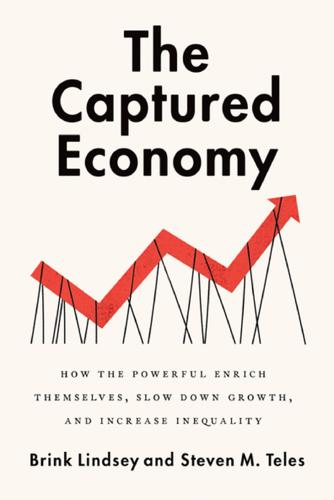
The Captured Economy: How the Powerful Enrich Themselves, Slow Down Growth, and Increase Inequality
by
Brink Lindsey
Published 12 Oct 2017
Harvard Kennedy School Faculty Research Working Paper RWP12-028, updated draft January 2015, https://scholar.harvard.edu/files/shoag/files/why_has_regional_income_convergence_in_the_us_declined_01.pdf. 12.Ganong and Shoag, “Why Has Regional Income Convergence in the U.S. Declined?” 13.See Moretti, The New Geography of Jobs, p. 77. 14.See Moretti, The New Geography of Jobs, pp. 95–97. 15.See Antonio Ciccone and Robert E. Hall, “Productivity and the Density of Economic Activity,” American Economic Review 86, no. 1 (1996): 54–70, http://web.stanford.edu/~rehall/Productivity-AER-March-1996.pdf; Morris A. Davis, Jonas D. M. Fisher, and Toni M.
…
article+1007&context=penniur_papers. 8.See Jaison R. Abel, Ishita Dey, and Todd M. Gabe, “Productivity and the Density of Human Capital,” Federal Reserve Bank of New York Staff Report no. 440, March 2010 (revised September 2011), http://www.newyorkfed.org/research/staff_reports/sr440.pdf. 9.See Enrico Moretti, The New Geography of Jobs (New York: Houghton Mifflin, 2012), p. 96. 10.See Robert J. Barro and Xavier Sala-i-Martin, “Convergence across States and Regions,” Brookings Papers on Economic Activity 22, no. 1 (1991): 107–82. 11.Peter Ganong and Daniel Shoag, “Why Has Regional Income Convergence in the U.S. Declined?”
…
Ioannides, “Productivity and Metropolitan Density,” Discussion Paper Series, Department of Economics, Tufts University, May 15, 2000. 16.See Jaison R. Abel, Ishita Dey, and Todd M. Gabe, “Productivity and the Density of Human Capital,” Federal Reserve Bank of New York Staff Report no. 440, March 2010 (revised September 2011), http://www.newyorkfed.org/research/staff_reports/sr440.pdf. 17.See Moretti, The New Geography of Jobs, pp. 94–95. 18.Enrico Moretti, “Estimating the Social Return to Higher Education: Evidence from Longitudinal and Repeated Cross-Sectional Data,” Journal of Econometrics 121 (2004): 175–212. 19.Ryan Avent, The Gated City (Amazon Digital Services, Kindle Edition, 2011). 20.See Edward L.

The End of Work: Why Your Passion Can Become Your Job
by
John Tamny
Published 6 May 2018
It is only logical, then, that technological innovation drives enormous wealth creation as more and longer-living people interact with each other. And as wealth grows, so does demand for goods and services of all kinds that have little direct connection with technology. In short, the wealth that springs from technology is what Professor Enrico Moretti of the University of California at Berkeley calls a “jobs multiplier.” In The New Geography of Jobs (2012) Moretti asserts that “for each new high-tech job in a city, five additional jobs are ultimately created out of the high-tech sector.”14 As people prosper in tech, their need for other services grows—personal trainers, yoga instructors, investment bankers, lawyers, restaurants, wine. . .Since the average American spends 14 percent of his income on food and beverages, where there’s abundant wealth there’s the chance for the Wolfgang Puck or the Danny Meyer of tomorrow to pursue his passion alongside technologists pursuing theirs.15 A rising tide in technological centers such as San Francisco, San Jose, Austin, and Boston surely enhances opportunity for the majority of us not interested in, or intimidated by, technology.
…
Chapter Nine: Why We Need People with Money to Burn 1.Warren Brookes, The Economy in Mind (New York: Universe Books, 1982), p. 77. 2.Walter Isaacson, Steve Jobs (New York: Simon & Schuster, 2011), 407. 3.Ibid., 157. 4.David McCullough, The Wright Brothers (New York: Simon & Schuster, 2015), 34. 5.Ibid., 108. 6.Konstantin Kakaes, “New Directions,” Wall Street Journal, June 25–26, 2016. 7.Isaacson, Steve Jobs, 339. 8.Dawn Kawamoto, Ben Heskett, and Mike Ricciuti, “Microsoft to invest $150 million in Apple,” CNET, August 6, 1997. 9.Alexis Tsotsis, “Uber Gets $32 Million From Menlo Ventures, Jeff Bezos, and Goldman Sachs,” Tech Crunch, December 7, 2011. 10.Source: Forbes, http://www.forbes.com/profile/jeff-bezos/. 11.Peter Thiel with Blake Masters, Zero to One (New York: Crown Business, 2014), 84. 12.Noam Cohen, “Technology’s Trumpian Visions,” New York Times, July 27, 2016. 13.Enrico Moretti, The New Geography of Jobs (New York: Houghton Mifflin, 2012), 37. 14.Ibid., 13. 15.Ibid., 168. 16.Ibid., 52. 17.Ibid., 60. 18.Ibid., 62. 19.Michael Freeman, ESPN: The Uncensored History (Lanham, Md.: Taylor Trade Publishing, 2000), 58. 20.Ibid., 59. 21.Ibid. 22.Ibid., 7. 23.Ibid., 77. 24.Thomas Kessner, Capital City: New York City and the Men Behind Its Rise to Economic Dominance, 1860–1900 (New York: Simon & Schuster, 2003). 25.T.
…
Knopf, 2009), 13. 3.Henry Hazlitt, Economics in One Lesson (New York: Three Rivers Press, 1979), 28. 4.Source: Forbes, Highest Paid Athletes, http://www.forbes.com/athletes/list/#tab:overall. 5.Source: Forbes, Highest Paid Celebrities, http://www.forbes.com/celebrities/list/#tab:overall. 6.Source: Forbes, The World’s Billionaires, http://www.forbes.com/billionaires/list/. 7.Joel Trammell, The CEO Tightrope (Austin: Greenleaf Book Group Press, 2014), 79. 8.Mat Smith, “Meet the laundry-folding washing machine of our lazy-ass future,” Engadget, October 7, 2015. 9.Enrico Moretti, The New Geography of Jobs (New York: Houghton Mifflin Harcourt, 2012), 36. 10.Eric John Abrahamson, Building Home: Howard F. Ahmanson and the Politics of the American Dream (Berkeley: University of California Press, 2013), 29. 11.Robyn Meredith, The Elephant and the Dragon (New York: Norton, 2007), 59. 12.Hazlitt, Economics in One Lesson, 188. 13.Ibid., 188. 14.Ibid.

Age of the City: Why Our Future Will Be Won or Lost Together
by
Ian Goldin
and
Tom Lee-Devlin
Published 21 Jun 2023
Historians, economists, sociologists, urban planners and other experts all look at cities through different lenses. Each are valuable, but problems do not emerge in disciplinary silos, nor do solutions. We are far from the first to recognize the fundamental importance of cities to the modern world. Ed Glaeser’s Triumph of the City, Richard Florida’s The Rise of the Creative Class, Enrico Moretti’s The New Geography of Jobs and many other excellent books over recent years have laid a trail before us, as have canonical works such as Lewis Mumford’s The City in History, Peter Hall’s Cities in Civilization, Jane Jacobs’ The Death and Life of Great American Cities and Paul Bairoch’s Cities and Economic Development.
…
Local prices and the geography of consumption’, NBER working paper. 41 Authors’ calculations based on Nationwide Bank data. 42 Authors’ calculations based on National Centre of Education Statistics data. 43 Federal Reserve Bank of New York, 2021, ‘The labor market for recent college graduates’ (newyorkfed.org). 44 Moretti, E., 2012, The New Geography of Jobs (First Mariner Books), p. 76. 45 Jain, V., 2019, ‘Case study on territorial development in Japan’, World Bank (worldbank.org). 46 Miwa, N., 2022, ‘High-speed rail development and regional inequalities: evidence from Japan’, Transportation Research Record. 47 Authors’ calculations based on Oxford Economics data. 48 Puga, D., 2002, ‘European regional policies in light of recent location theories’, Journal of Economic Geography, Vol. 2, No. 4. 49 Elliott, L., 2019, ‘HS2 would widen UK north–south divide and should be axed, says report’, Guardian. 50 Moretti, The New Geography of Jobs. 51 Glaeser, E., 2005, ‘Reinventing Boston: 1630–2003’, Journal of Economic Geography, Vol. 5, No. 2. 52 Shapiro, S., 2015, ‘New species of city discovered: university city’, Next City. 53 Florida, R., 2002, The Rise of the Creative Class (Basic Books). 54 Matsu, J., et al., 2022, ‘Investing in regional equality – lessons from four cities’, Chartered Institute of Public Finance and Accountancy (cipfa.org). 55 Ibid. 56 Ibid. 57 Ibid.
…
Local prices and the geography of consumption’, NBER working paper. 41 Authors’ calculations based on Nationwide Bank data. 42 Authors’ calculations based on National Centre of Education Statistics data. 43 Federal Reserve Bank of New York, 2021, ‘The labor market for recent college graduates’ (newyorkfed.org). 44 Moretti, E., 2012, The New Geography of Jobs (First Mariner Books), p. 76. 45 Jain, V., 2019, ‘Case study on territorial development in Japan’, World Bank (worldbank.org). 46 Miwa, N., 2022, ‘High-speed rail development and regional inequalities: evidence from Japan’, Transportation Research Record. 47 Authors’ calculations based on Oxford Economics data. 48 Puga, D., 2002, ‘European regional policies in light of recent location theories’, Journal of Economic Geography, Vol. 2, No. 4. 49 Elliott, L., 2019, ‘HS2 would widen UK north–south divide and should be axed, says report’, Guardian. 50 Moretti, The New Geography of Jobs. 51 Glaeser, E., 2005, ‘Reinventing Boston: 1630–2003’, Journal of Economic Geography, Vol. 5, No. 2. 52 Shapiro, S., 2015, ‘New species of city discovered: university city’, Next City. 53 Florida, R., 2002, The Rise of the Creative Class (Basic Books). 54 Matsu, J., et al., 2022, ‘Investing in regional equality – lessons from four cities’, Chartered Institute of Public Finance and Accountancy (cipfa.org). 55 Ibid. 56 Ibid. 57 Ibid.
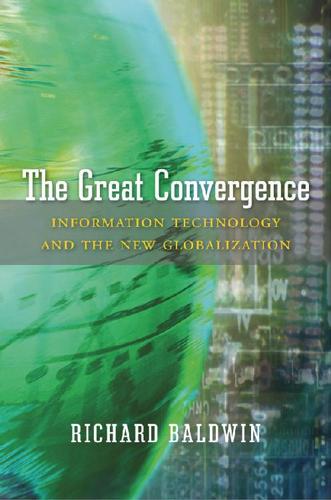
The Great Convergence: Information Technology and the New Globalization
by
Richard Baldwin
Published 14 Nov 2016
Gallen and I pointed out in our 2012 paper for the British government on value creation and trade in manufacturing.4 The main point is that wise governments should distinguish carefully between factors of production that are internationally mobile and those that are internationally immobile. Both matter. Both contribute to national income. But, as Enrico Moretti points out in his must-read book The New Geography of Jobs, good jobs created in G7 nations have a local multiplier effect, which good jobs created by G7 firms abroad do not.5 A Two-Dimensional Evaluation The point that some forms of capital may escape abroad suggests that an important consideration for policy should be the “stickiness” of the various productive factors.
…
Richard Baldwin and Simon Evenett, “Value Creation and Trade in Twenty-First Century Manufacturing: What Policies for U.K. Manufacturing?” in The U.K. in a Global World: How Can the U.K. Focus on Steps in Global Value Chains That Really Add Value? ed. David Greenaway (London: Centre for Economic Policy Research, 2012). 5. Enrico Moretti, The New Geography of Jobs (Boston: Houghton Mifflin Harcourt, 2012). 6. I first made these points in a 2012 paper: Richard Baldwin, “WTO 2.0: Global Governance of Supply-Chain Trade,” Centre for Economic Policy Research, Policy Insight No. 64, December 2012, http://www.cepr.org/sites/default/files/policy_insights/PolicyInsight64.pdf. 9.
…
See also migrations, human; telepresence/telerobotics; three-cascading-constraints view multiple equilibria, 254–256, 255f, 256–257, 258f, 266–267 NAFTA (North American Free Trade Agreement), 75, 135 Naisbitt, John, 283 Napoleonic Wars, 42 national perspective: denationalization of production and, 148–149; free trade and, 147; global value chains and, 146; New Globalization and, 11, 12, 80–81f, 160–161, 165–167, 166f, 170, 175–176, 236–237; Old Globalization (first unbundling) and, 170, 172; policy-rethinking and, 13–14; Ricardo and, 127, 128. See also comparative (competitive) advantage; coordination; land; offshoring; policies; smuggling; spillovers; tariffs and protectionism; unions, labor Netherlands, 56, 235. See also imperialists New Economic Geography (NEG) , 179, 186–196, 189f, 194f, 208–211, 214 The New Geography of Jobs (Moretti), 228, 233, 235 New Globalization (Phase Four) (second unbundling): control and, 174–175, 176; endogenous growth/New Economic Geography and, 193–196, 194f; industrialization and, 7, 8; know-how and, 139; mental models and, 112, 113; moving ideas and, 161–162; North-South back-and-forth trade and, 97; North-South borders and, 151; North-South shift in manufacturing and, 7, 86–89, 142–145; Old Globalization (first unbundling) compared, 6, 138–141, 142–176, 166f–169, 177–220, 221; pace of change and, 170–171, 174, 176; poverty and, 105, 108f, 162–163, 242; predictability and, 171–172, 176; protectionism and, 98, 99–102; summaries, 6, 7, 10–14, 19, 48f–49, 77–78, 109–110, 142–277; winners and losers, 160–164.

A World Without Work: Technology, Automation, and How We Should Respond
by
Daniel Susskind
Published 14 Jan 2020
In 2015, the United States paid its nurses 1.24 times the average wage; the UK, 1.04; and France, 0.95. 26. Personal care aides (83.7 percent), registered nurses (89.9 percent), home health aides (88.6 percent), food preparation and services (53.8 percent), retail salespersons (48.2 percent). Again, see the US Bureau of Labor Statistics “Household Data.” 27. Enrico Moretti, The New Geography of Jobs (New York: First Mariner Books, 2013), p. 17. 28. Ibid., p. 23. 29. Ibid., pp. 82–5. 30. Ibid., p. 89. 31. Emily Badger and Quoctrung Bui, “What If Cities Are No Longer the Land of Opportunity for Low-Skilled Workers?,” New York Times, 11 January 2019. 32. Moretti, New Geography of Jobs. 33.
…
I disagree with Autor’s conclusion, but find the framing useful. 57. See http://www.worldbank.org/en/topic/poverty/overview (accessed April 2018). 9. EDUCATION AND ITS LIMITS 1. See https://web.archive.org/web/20180115215736/twitter.com/jasonfurman/status/913439100165918721. 2. Enrico Moretti, The New Geography of Jobs (New York: First Mariner Books, 2013), p. 226. 3. Ibid., p. 228. 4. Claudia Goldin and Lawrence Katz, The Race Between Education and Technology (London: Harvard University Press, 2009), p. 13. 5. Ibid., p. 12. 6. Quoted in Michelle Asha Cooper, “College Access and Tax Credits,” National Association of Student Financial and Administrators (2005). 7.
…
Mokyr, Joel, Chris Vickers, and Nicholas Ziebarth. “The History of Technological Anxiety and the Future of Economic Growth: Is This Time Different?” Journal of Economic Perspectives 29, no. 3 (2015): 31–50. Moravec, Hans. Mind Children. Cambridge, MA: Harvard University Press, 1988. Moretti, Enrico. The New Geography of Jobs. New York: First Mariner Books, 2013. Morozov, Evgeny. To Save Everything, Click Here: Technology, Solutionism, and the Urge to Fix Problems That Don’t Exist. New York: PublicAffairs, 2013. Motta, Massimo. Competition Policy. Cambridge: Cambridge University Press, 2007. Müller, Karsten, and Carlo Schwarz.

Cities Are Good for You: The Genius of the Metropolis
by
Leo Hollis
Published 31 Mar 2013
But when I visited, as my taxi drove me away from the new shiny terminal I was warned that it might take three hours to get to my hotel. They were still building the road between the city and the airport. The fabric of the city was failing to keep up with the demands of the burgeoning creative economy it has spawned. The economist Enrico Moretti has been charting the new geography of jobs in America and his research reveals that the new knowledge workers have a multiplier effect wherever they work. Creative jobs often attract other creative workers; in addition they increase employment and salaries for those who are providing local services: ‘for each new high-tech job in a city, five additional jobs are ultimately created outside of the high-tech sector in that city’.10 The creative economy has a powerful impact on its host city, but not all cities are equal.
…
Bettencourt, L., Lobo, J. et al, Growth Innovation, Scaling and the Pace of Life in Cities, PNAS, 16 April 2007, p. 7, 303. 6. Schama, S., The Embarrassment of Riches, HarperCollins, 2004, p. 347 7. Ibid., p. 303. 8. UN, Creative Economy, UN, 2010, p. 38. 9. Florida, R., Who’s Your City?, Basic Books, 2008, p. 99. 10. Moretti, E., The New Geography of Jobs, Houghton Mifflin, 2012, Introduction. 11. Florida, R., 2008, p. 3. 12. Ibid., p. 71. 13. www.londonlovesbusiness.com/comment/the-debate-is-tech-city-working 14. www.theatlanticcities.com/neighborhoods/2011/12/stuck-or-content/770 15. Sassen, S., Urban Age Project, LSE, 2011, p. 56. 16. www.techhub.com 17. www.guardian.co.uk/business/2011/nov/27/tech-city-digital-startups-shoreditch 18.
…
Blom, P., Amsterdam, Harvill, 1999 Mandeville, B., The Fable of the Bees, 1715, oll.libertyfund.org Marshall, G. and Batty, M., ‘Geddes’s Grand Theory: Life, Evolution, Social Union, and “The Grand Transition” ’, UCL Working Papers Series, 162, September 2010 Martin, R., Meisterlin, L. and Kenoff, A., The Buell Hypothesis, buellcenter.org/buell-hypothesis.php Mayinger, F., Mobility and Traffic in the 21st Century, Springer, 2001 Mayor, J. and Coleman, B., The Social and Emotional Benefits of Good Street Design, Brighton and Hove City Council/Civitas, August 2011 Mehta, S., The Urban Age, LSE, 2011 Middleton, N., Gunnell, D. et al, ‘Urban-Rural Differences in Suicide Rates in Young Adults: England and Wales: 1981–1998’, Social Science and Medicine, 57, 2003 Milanovic, B., The Haves and the Have-Nots, Basic Books, 2012 Miller, P., Smart Swarm, Collins, 2012 Minton, A., Ground Control: Fear and Happiness in the 21st-Century City, Penguin, 2009 Misztal, B., Trust in Modern Society, Polity Press, 1996 Modorov, E., The Net Delusion: How Not to Liberate the World, Penguin, 2011 Moretti, E., The New Geography of Jobs, Houghton Mifflin, 2012 Morris, I., Why the West Rules for Now: the Patterns of History and What They Reveal about the Future, Profile Books, 2010 Mullins, C., Festival on the River: The Story of the Southbank, Penguin, 2010 Nagy, A. R. and Podolny, J., ‘William Bratton and the NYPD’, Yale School of Management, Yale Case 07–015, 12 February 2008 Nathan, M., Vandore, E. and Whitehead, R., A Tale of Tech City: The Future of Inner East London’s Digital Economy, The Centre for London, July 2012 Neuwirth, R., Shadow Cities, Routledge, 2004 Neuwirth, R., Stealth of Nations, Pantheon Books, 2011 New York Civil Liberties Union, Who’s Watching?
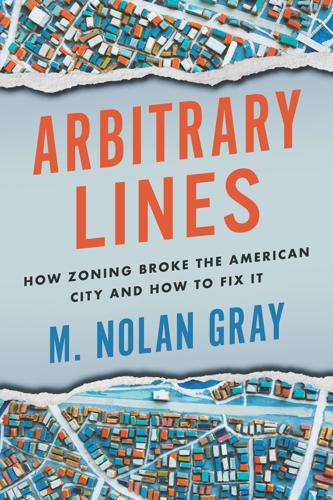
Arbitrary Lines: How Zoning Broke the American City and How to Fix It
by
M. Nolan Gray
Published 20 Jun 2022
This degree of specialization—and the better door handles it produces—would not be possible without a truly massive labor market. 7. Alain Bertaud, Order without Design: How Markets Shape Cities (Cambridge, MA: MIT Press, 2018), chap. 2. 8. Recall from the appendix that land prices drive density in that high land prices incentivize the efficient use of land through increased density. 9. Enrico Moretti, The New Geography of Jobs (Boston: Mariner Books, 2013), 128. 10. While clusters may rebuild themselves in areas where housing is cheaper—be it tech in Austin and Denver or finance in Dallas and Charlotte—these clusters take decades to emerge, with a lot of potential productivity and innovation lost in the interim.
…
CHAPTER 4: THE WEALTH WE LOST • For an early study of how artificial constraints on housing in wealthy cities are driving economic stagnation, see The Gated City by Ryan Avent (Kindle Single, 2011). • For a broad look at the economic importance of dense cities and the zoning regulations holding them back, see Triumph of the City by Edward Glaeser (Penguin Press, 2011). • For a more recent overview of the distressing economic implications of zoning, see The New Geography of Jobs by Enrico Moretti (Houghton Mifflin Harcourt, 2012). CHAPTER 5: APARTHEID BY ANOTHER NAME • For the best single book on how planners systematically segregated the United States by race, see The Color of Law by Richard Rothstein (Liveright, 2017). • For a deeper dive into the relationship between zoning and segregation, including how segregation in turn shapes society, see Segregation by Design by Jessica Trounstine (Cambridge University Press, 2018)
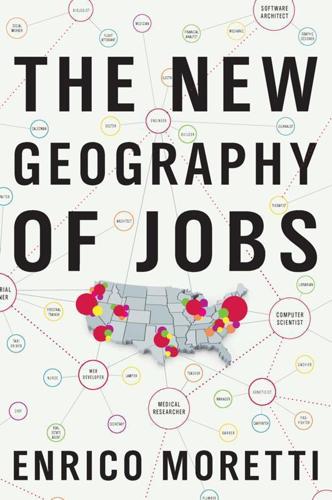
The New Geography of Jobs
by
Enrico Moretti
Published 21 May 2012
The New “Human Capital Century” Acknowledgments Notes References Index Footnotes Copyright © 2012 by Enrico Moretti All rights reserved For information about permission to reproduce selections from this book, write to Permissions, Houghton Mifflin Harcourt Publishing Company, 215 Park Avenue South, New York, New York 10003. www.hmhbooks.com Library of Congress Cataloging-in-Publication Data Moretti, Enrico. The new geography of jobs / Enrico Moretti. p. cm. Includes bibliographical references and index. ISBN 978-0-547-75011-8 1. Labor market—United States. 2. Economic development—United States. 3. Equality—United States. 4. Technological innovations—Economic aspects—United States. I. Title. HD5706.M596 2012 331.10973—dc23 2012007933 Printed in the United States of America DOC 10 9 8 7 6 5 4 3 2 1 To Ilaria Introduction Menlo park is a lively community in the heart of Silicon Valley, just minutes from Stanford University’s manicured campus and many of the Valley’s most dynamic high-tech companies.
…
Whether you work inside or outside the innovation sector, whether you are self-employed or work for others, where you live greatly affects all aspects of your life, from your career to your finances, from the kind of people you meet to the values your children are exposed to. As America’s cities grow apart, it is more important than ever to understand the new geography of jobs. The coming chapters are a voyage through the new economic landscape. We will explore cities that are rising and cities that are dying. We will travel to faraway lands and familiar backyards. We will meet a color scientist at Pixar and a bookbinder in San Francisco. We’ll walk the streets of Seattle’s up-and-coming Pioneer Square, once known for its methadone clinics and now home to companies such as Zynga and Blue Nile.

Exponential Organizations: Why New Organizations Are Ten Times Better, Faster, and Cheaper Than Yours (And What to Do About It)
by
Salim Ismail
and
Yuri van Geest
Published 17 Oct 2014
Twenty-one questions are scored from one to four. A score over 55 indicates an ExO.] Haier – Higher and Higher One of the biggest concerns we hear about from companies implementing ExO thinking is that “It might work in Silicon Valley, but it just won’t work in London, or Budapest or Milan.” In his book The New Geography of Jobs, Enrico Moretti argues just that: where a company is based does indeed matter. For example, if you’re trying to build a global company in Italy, your primarily Italian speakers at company headquarters won’t have a global perspective. Thus, it’s no accident that most of the ExOs we’ve found are based in Silicon Valley, or at least in English-speaking countries.
…
(2013). The End of Big: How the Internet Makes David the New Goliath. St. Martin’s Press. Merchant, N. (2012). 11 Rules for Creating Value In the #SocialEra. CreateSpace Independent Publishing. Mintzberg, H. (1994). Rise and Fall of Strategic Planning. Free Press. Moretti, E. (2012). The New Geography of Jobs. Mariner Books. Osterwalder, A., & Pigneur, Y. (2010). Business Model Generation: A Handbook for Visionaries, Game Changers, and Challengers. Wiley. Osterwalder, A., Pigneur, Y., Bernarda, G., & Smith, A. (2014). Value Proposition Design: How to Create Products and Services Customers Want.

Restarting the Future: How to Fix the Intangible Economy
by
Jonathan Haskel
and
Stian Westlake
Published 4 Apr 2022
Smallness tends to be a disadvantage, though some smaller cities or towns can defy the power of agglomeration if they have lots of intangibles—for example, in the United Kingdom, university towns such as Cambridge (population 125,000), or towns with a big, productive local firm, such as Rolls-Royce in Derby (population 255,000). But if the spillovers from a big employer are what is making a place rich, then the place is vulnerable to gambler’s ruin. Not every town can have a world-leading university. One consequence of the growing divide between places is political dysfunction. In his book The New Geography of Jobs, Enrico Moretti reports disengagement with the political process, but shortly after his book’s publication, a wave of political entrepreneurs around the world provided disengaged voters with something that appealed to them: populism, often combined with promises of bringing back a social and economic world that had been lost.15 We might hope that technology will rescue us from this double bind of rich-but-strangled cities and decaying, disaffected towns and that the COVID-19 home-working revolution might accelerate this change.
…
The Gifts of Athena : Historical Origins of the Knowledge Economy. Princeton, NJ: Princeton University Press. ________. 2018. “The Past and the Future of Innovation: Some Lessons from Economic History.” Explorations in Economic History 69: 13–26. https://doi.org/10.1016/j.eeh.2018.03.003. Moretti, Enrico. 2012. The New Geography of Jobs. Boston: Houghton Mifflin Harcourt. Myers, John. 2020. “Fixing Urban Planning with Ostrom: Strategies for Existing Cities to Adopt Polycentric, Bottom-Up Regulation of Land Use.” Mercatus Research, Mercatus Center at George Mason University, Arlington, VA, February. https://www.mercatus.org/system/files/myers_-_mercatus_research_-_fixing_urban_planning_with_ostrom_-_v1.pdf.

Good Economics for Hard Times: Better Answers to Our Biggest Problems
by
Abhijit V. Banerjee
and
Esther Duflo
Published 12 Nov 2019
The problem is finding instances where the level of education in the population at large goes up significantly without other things (policies, investments, etc.) changing at the same time. There is clear evidence, however, that cities as a whole can benefit from a large investment. Michael Greenstone, Rick Hornbeck, and Enrico Moretti (who is the author of The New Geography of Jobs,39 which argues that spillovers are the reason why cities are growing and rural areas are not) ask whether cities as a whole benefit from attracting a high-profile plant, much like Amazon’s HQ2.40 To answer this question, their study compared the winners of bidding wars to attract companies to the first runners-up.
…
Summers, “Saving the Heartland: Place-Based Policies in 21st Century America,” Brookings Papers on Economic Activity Conference Drafts, 2018. 72 Peter Ganong and Daniel Shoag, “Why Has Regional Income Convergence in the U.S. Declined?,” Journal of Urban Economics 102 (2017): 76–90. 73 Enrico Moretti, The New Geography of Jobs (Boston: Houghton Mifflin Harcourt, 2012). 74 Ganong and Shoag, “Why Has Regional Income Convergence in the U.S. Declined?” 75 “Starbucks,” Indeed.com, accessed April 21, 2019, https://www.indeed.com/q-Starbucks-l-Boston,-MA-jobs.html; “Starbucks,” Indeed.com, accessed April 21, 2019, https://www.indeed.com/jobs?
…
_V516043504_.pdf accessed June 14, 2019. 38 Adam B. Jaffe, Manuel Trajtenberg, and Rebecca Henderson, “Geographic Localization of Knowledge Spillovers as Evidenced by Patent Citations,” Quarterly Journal of Economics 108, no. 3 (1993): 577–98, https://doi.org/10.2307/2118401. 39 Enrico Moretti. The New Geography of Jobs. (Boston: Mariner Books, 2012). 40 Michael Greenstone, Richard Hornbeck, and Enrico Moretti, “Identifying Agglomeration Spillovers: Evidence from Winners and Losers of Large Plant Openings,” Journal of Political Economy 118, no. 3 (June 2010): 536–98, https://doi.org/10.1086/653714. 41 Of course, the question being asked in New York was not about the size of the gains (everybody agreed there would be some) but why Amazon was allowed to keep so much of it for themselves.

The Meritocracy Trap: How America's Foundational Myth Feeds Inequality, Dismantles the Middle Class, and Devours the Elite
by
Daniel Markovits
Published 14 Sep 2019
the country’s twenty-five richest metro areas included: Longman, “Bloom and Bust.” relatively evenly across cities: Bishop, The Big Sort, 130. a “single American standard of living” emerged: Longman, “Bloom and Bust.” knowledge spillovers: See Enrico Moretti, The New Geography of Jobs (New York: Houghton Mifflin Harcourt, 2012), 138–44. Hereafter cited as Moretti, The New Geography of Jobs. Edward Glaeser, The Triumph of the City: How Our Greatest Invention Makes Us Richer, Smarter, Greener, Healthier, and Happier (New York: Penguin, 2012). resegregating by income: See Matthew P. Drennan, Jose Lobo, and Deborah Strumsky, “Unit Root Tests of Sigma Income Convergence Across US Metropolitan Areas,” Journal of Economic Geography 4, no. 5 (2004): 583–95.
…
See also Michael Porter, “The Economic Performance of Regions,” Regional Studies 37, no. 6 (2003): 549–78, 550, 551. nearly 30 percent for San Francisco: See Longman, “Bloom and Bust,” Figure 2. the ten worst-educated metro areas: Bishop, The Big Sort, 131–32. the least educated cities: See Moretti, The New Geography of Jobs, 107–11. See also Enrico Moretti, “America’s Great Divergence: The New Innovation Economy Is Making Some Cities Richer, Many Cities Poorer—and It’s Transforming Our Country,” Salon, May 12, 2012. Hereafter cited as Moretti, “America’s Great Divergence.” House prices and rents follow suit: Indeed, the ratios between per capita incomes in the tenth and ninetieth most expensive housing markets, after hitting a low of 1.36, have grown steeply since, to reach 1.61 in 2013.
…
See also Charles Murray, “Charles Murray, Author of Coming Apart, Examines Demographic Shifts in This New Decade,” Debate This Book, April 25, 2013, http://debatethisbook.com/2013/04/25/charles-murray-author-of-coming-apart-examines-demographic-shifts-in-this-new-decade/. more political clout: See Moretti, The New Geography of Jobs. See also Moretti, “America’s Great Divergence.” inequality of dollar income: See Rebecca Diamond, “The Determinants and Welfare-Implications of U.S. Workers’ Divergent Location Choices by Skill: 1980–2000,” American Economic Review 106, no. 3 (2016): 479–524. others like themselves: See Bishop, The Big Sort, 130.
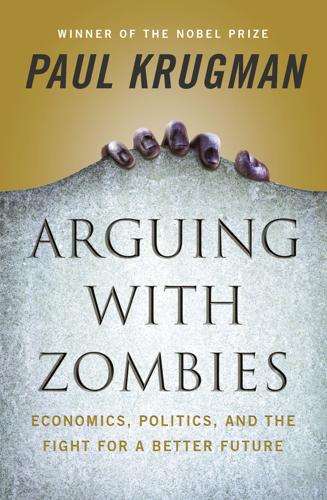
Arguing With Zombies: Economics, Politics, and the Fight for a Better Future
by
Paul Krugman
Published 28 Jan 2020
Wilson famously argued that the social ills of the non-white inner-city poor had their origin not in some mysterious flaws of African-American culture but in economic factors—specifically, the disappearance of good blue-collar jobs. Sure enough, when rural whites faced a similar loss of economic opportunity, they experienced a similar social unraveling. So what is the matter with Trumpland? For the most part I’m in agreement with Berkeley’s Enrico Moretti, whose 2012 book, The New Geography of Jobs, is must reading for anyone trying to understand the state of America. Moretti argues that structural changes in the economy have favored industries that employ highly educated workers—and that these industries do best in locations where there are already a lot of these workers. As a result, these regions are experiencing a virtuous circle of growth: their knowledge-intensive industries prosper, drawing in even more educated workers, which reinforces their advantage.
…
L., 147 mercantilism, 250 Merkel, Angela, 98 microeconomics, 407, 408 middle class: cutting benefits for, 30, 196, 309 and financial managers, 92–94 and income distribution, 266, 273 and income mobility, 277, 278 raising taxes on, 199 Mildenberger, Matto, 305, 306 Minskyism, 409 Mississippi, income inequality in, 291–92 Mnuchin, Steven, 322 moderation, instability of, 407–10 financial instability, 409–10 intellectual instability, 407–8 political instability, 408–9 Modern Monetary Theory (MMT), 125, 152, 154, 203 monetarism, 133, 409 monetary economics, 176 monetary policy, 128–29, 140, 143, 144, 153 money: conventional (currency), 412–14 cryptocurrency, 411–14 dollar cash holdings, 413 dollar notes, 413–14 fiat currencies, 414 speculative, 413 as store of value, 112 “Money and Morals” (Krugman), 260, 285–87 money managers, 92–94 money supply, central banks’ control of, 110, 112, 124, 133 “Monopolistic Competition and Optimum Product Diversity” (Dixit and Stiglitz), 396–98 monopoly power, 228, 236 monopsony power, 316–17 Moore, John, 147 Moore, Michael, 44, 45 Moore, Roy, 309 Moretti, Enrico, The New Geography of Jobs, 292 mortgage rates, 87 mortgages, subprime, 90–91, 136 “Most Important Thing, The” (Krugman), 327–28 motives, talk about, 8 Moulton, Seth, 76 movement conservatism, 297–98, 302–4, 307 definition of, 302 keeping zombie ideas alive via, 8 and Republican Party, 297, 299–301, 302, 368 and Tea Party, 303 white resentment as basis of, 343 “Movement Conservativism” (Krugman), 297–98 Moynihan, Daniel Patrick, 5 Mueller, Robert, 307 Mueller investigation, 360 Mulford, David, 405 Mulligan, Casey, 144 Mulvaney, Mick, 207, 225 Murdoch, Rupert, 297, 375 Murphy, Kevin, 279 Murray, Charles, Coming Apart: The State of White America, 1960–2010, 285–86 Mussolini, Benito, 346 “Myths of Austerity” (Krugman), 158, 160–62, 165 NAFTA, 372 NAIRU (non-accelerating-inflation rate of unemployment), 114 NASA, 163 National Association of Realtors, 84 National Climate Assessment, 332, 336 National Commission on Fiscal Responsibility and Reform, 198–200 nationalism, 343 National Older Women’s League, 198 National Review, The, 301 national security: and elections, 306 and tariffs, 251, 253, 255 NATO, 244 neoclassical economics, 132, 133, 139–40, 147 neoliberal ideology, 315 Netherlands, economy of, 184 New Deal, 107, 293, 308 New Geography of Jobs, The (Moretti), 292 New Hampshire, economic freedom in, 317, 317 New Jersey, health care in, 76, 78 New Keynesian views, 129, 139–40, 143, 145, 147 New York: health care in, 74, 318 infant mortality in, 317, 317 Medicaid expanded in, 318 New York Times, The, 348, 349 Nicaragua, and Iran-Contra, 300 Nimbyism, 291 Nixon administration, and media, 300 Nordhaus, William, 396 Norman, Victor, 398 “normative” economics, 1 Northam, Ralph, 308, 309 North Carolina: health care in, 77 Republican Party in, 359 Norway, economy of, 323 Obama, Barack: conservatives vs., 150, 208, 302, 320, 362 on health care, 53–55, 66, 339, 361 and international trade, 252 and taxes, 216, 219, 229 Obama administration: on debt and unemployment, 208 “hijacked” commission of, 198–200 and revenue growth, 225 stimulus plan of, 104, 107–8, 113–14, 115–17, 118–20, 131, 193, 206, 362 Obamacare, see Affordable Care Act O’Brien, Michael, 126 Ocasio-Cortez, Alexandria (AOC), 234, 236, 237, 320–21 Occupy Wall Street, 285 O’Connor, Reed, 367, 369 oil shocks, 126 Oklahoma, tax cuts in, 293 Okun’s Law, 113 oligarchy, 283, 349, 350 Olson, Mancur, The Logic of Collective Action, 354–55 Operation Coffee Cup (1961), 322 optimum currency areas, 177 Palin, Sarah, 54 Panama Papers, 349 Pangloss, Doctor (fict.), 135, 140 “paperclip maximizers,” 357 “Paranoid Style in American Politics, The” (Hofstadter), 346 parasites, 354–57 Paulson, Henry, 91 PBS Newshour, 169–71 Pelosi, Nancy: achievements of, 361–63 and Affordable Care Act, 35–36, 55, 361, 367 and financial reform, 362 as House Speaker, 76, 344, 362, 363 on “monstrous endgame,” 367, 369 on Social Security, 15, 35, 306, 361 and stimulus plan, 362 and trade agreement, 372 on the wall as “manhood thing,” 370 Pence, Mike, 73 pensions: defined benefit, 14 defined contribution, 14–15 401(k)-type plans, 31–32 private, decline of, 31–32 Perlstein, Rick, 302, 354, 355 Perot, H.

Connectography: Mapping the Future of Global Civilization
by
Parag Khanna
Published 18 Apr 2016
In early 2015, the trading house Itochu made the largest Japanese foreign investment ever in China, buying (together with Thailand’s CP Group) a 10 percent stake in CITIC, one of China’s oldest and most respected conglomerates. CHAPTER 7: THE GREAT SUPPLY CHAIN WAR 1. Interview with author, July 18, 2015. 2. Enrico Moretti, The New Geography of Jobs (Houghton Mifflin Harcourt, 2012). 3. Josh Tyrangiel, “Tim Cook’s Freshman Year: The Apple CEO Speaks,” Bloomberg Businessweek, Dec. 6, 2012. 4. However, additive manufacturing and the sharing economy together do cause tremendous domestic dislocation. The construction sector is not tradable, but it can increasingly be automated as entire homes are designed, printed, and assembled out of 3-D printing kits, displacing contractors and builders across America and Europe. 5.
…
“The Long and Short of Global Politics in the Twenty-First Century: An Evolutionary Approach.” International Studies Review 1, no. 2 (Summer 1999): 110–40. Monmonier, Mark, and H. J. de Blij. How to Lie with Maps. University of Chicago Press, 1996. Montgomery, Charles. Happy City: Transforming Our Lives Through Urban Design. Farrar, Straus and Giroux, 2013. Moretti, Enrico. The New Geography of Jobs. Houghton Mifflin Harcourt, 2012. Morris, Charles R. Comeback: America’s New Economic Boom. PublicAffairs, 2013. Morris, Ian. War! What Is It Good For? Conflict and the Progress of Civilization from Primates to Robots. Farrar, Straus and Giroux, 2014. Mufson, Steven. Keystone XL: Down the Line.
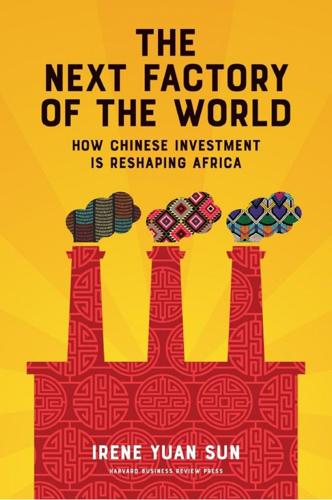
The Next Factory of the World: How Chinese Investment Is Reshaping Africa
by
Irene Yuan Sun
Published 16 Oct 2017
Justin Yifu Lin, “From Flying Geese to Leading Dragons: New Opportunities and Strategies for Structural Transformation in Developing Countries,” World Bank, Washington, DC, June 2011, 4. J. Esteban, J. Stiglitz, and Justin Yifu Lin, eds., The Industrial Policy Revolution II: Africa in the Twenty-first Century (Basingstoke, UK: Palgrave Macmillan, 2013). 10. Enrico Moretti, The New Geography of Jobs (Boston: Mariner, 2013), 21. 11. “Leveraging Africa’s Demographic Dividend,” African Business Magazine, January 14, 2015, http://africanbusinessmagazine.com/uncategorised/leveraging-africas-demographic-dividend/. 12. United Nations Population Division, “World Population Prospects: The 2015 Revision.” 13.

Cogs and Monsters: What Economics Is, and What It Should Be
by
Diane Coyle
Published 11 Oct 2021
Modestino, Alicia, Pascaline Dupas, Muriel Niederle, and Justin Wolfers, 2020, ‘Gender and the Dynamics of Economics Seminars’, presentation at American Economic Association Conference, San Diego, CA, USA, 4 January, https://www.aeaweb.org/conference/2020/preliminary/1872. Mokyr, J., 2017, A Culture of Growth: The Origins of the Modern Economy, Princeton, NJ: Princeton University Press. Moore, A., 2017, Critical Elitism: Deliberation, Democracy, and the Politics of Expertise, Cambridge: Cambridge University Press. Moretti, E., 2012, The New Geography of Jobs, Boston: Houghton Mifflin Harcourt. Morozov, E. 2019, ‘Digital Socialism?’, New Left Review, 116 (March–June), https://newleftreview.org/issues/II116/articles/evgeny-morozov-digital-socialism. Morson, Gary S., and Morton Schapiro, 2016, Cents and Sensibility: What Economics Can Learn from the Humanities, Princeton, NJ: Princeton University Press.
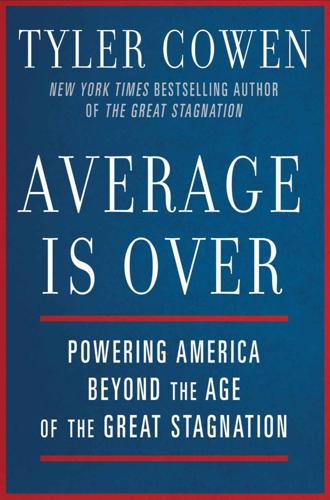
Average Is Over: Powering America Beyond the Age of the Great Stagnation
by
Tyler Cowen
Published 11 Sep 2013
On how cities are diverging, see Sabrina Tavernise, “A Gap in College Graduates Leaves Some Cities Behind,” The New York Times, May 30, 2012. Especially on convergence, see also Peter Ganong and Daniel Shoag, “Why Has Regional Convergence in the U.S. Stopped?” SSRN working paper, March 28, 2013, and also Enrico Moretti, The New Geography of Jobs (Boston: Houghton Mifflin Harcourt, 2012). On the geographic concentration of wage benefits from the internet, see Chris Forman, Avi Goldfarb, and Shane Greenstein, “The Internet and Local Wages: A Puzzle,” American Economic Review, Febuary 2012, 102(1): 556–75. On the German population growing again, see Suzanne Daley and Nicholas Kulish, “Brain Drain Feared as German Jobs Lure Southern Europeans,” The New York Times, April 28, 2012.

The New Urban Crisis: How Our Cities Are Increasing Inequality, Deepening Segregation, and Failing the Middle Class?and What We Can Do About It
by
Richard Florida
Published 9 May 2016
Freemark’s analysis charted population change in America’s one hundred largest cities, comparing the change in overall population to the change in the built-up areas of those cities (areas with a population density of 4,000 people per square mile or more), with central areas in and around the urban core defined as those within 1.5 to 3 miles of city hall. 27. See Enrico Moretti, The New Geography of Jobs (Boston: Houghton Mifflin Harcourt, 2012). 28. Richard Florida, “Cost of Living Is Really All About Housing,” CityLab, July 21, 2014, www.citylab.com/housing/2014/07/cost-of-living-is-really-all-about-housing/373128; Richard Florida, “The U.S. Cities with the Most Leftover to Spend… After Paying for Housing,” CityLab, December 23, 2011, www.citylab.com/housing/2011/12/us-cities-with-most-spend-after-paying-housing/778. 29.
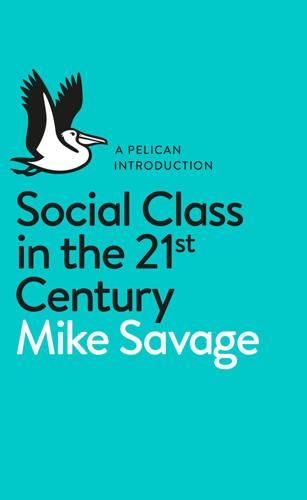
Social Class in the 21st Century
by
Mike Savage
Published 5 Nov 2015
These different local identities played into very distinctive cultural identities, all of them highlighting different kinds of working class culture, ranging from the trade unionist and socialist culture of Sheffield, through to the cosmopolitan and respectable ethos in Manchester and the maritime and trading culture of Liverpool. From the 1960s, these distinctive northern geographies were increasingly subordinated to the growing power of London and the south-east. Doreen Massey, writing in the mid-1980s, identified that ‘in the new geography of jobs, most of the high-level, high-status and well-paid research, technical and development functions are located in the South and East of England’.21 The older history of a northern Randstad, with its distinctive urban cultures, was increasingly stripped away, by what Martin has called our northern ‘nineteenth-century city states’, leaving a collection of conurbations.22 The contemporary hold of these regional images remains important.
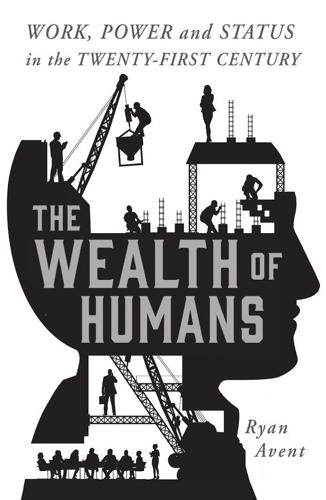
The Wealth of Humans: Work, Power, and Status in the Twenty-First Century
by
Ryan Avent
Published 20 Sep 2016
Johnson, 1798) Marx, Karl, and Engels, Friedrich, Manifesto of the Communist Party (1848) Milanovic, Branko, Global Inequality: A New Approach for the Age of Globalization (Cambridge, MA: Harvard University Press, 2016) Mokyr, Joel, The Gifts of Athena: Historical Origins of the Knowledge Economy (Princeton, NJ: Princeton University Press, 2002) _____, The Lever of Riches: Technological Creativity and Economic Progress (Oxford: Oxford University Press, 1990) Moretti, Enrico, The New Geography of Jobs (New York, NY: Houghton Mifflin Harcourt, 2012) Murray, Charles, Coming Apart: The State of White America, 1960–2010 (New York, NY: Crown Publishing Group, 2012) Pickett, Kate, and Wilkinson, Richard, The Spirit Level: Why Greater Equality Makes Societies Stronger (London: Allen Lane, 2009) Piketty, Thomas, Capital in the Twenty-First Century (Cambridge, MA: Harvard University Press, 2014) Putnam, Robert, Bowling Alone: The Collapse and Revival of American Community (New York, NY: Simon & Schuster, 2001) Rifkin, Jeremy, The Zero Marginal Cost Society: The Internet of Things, the Collaborative Commons, and the Eclipse of Capitalism (London: Palgrave Macmillan, 2014) Rodrik, Dani, The Globalization Paradox: Democracy and the Future of the World Economy (Oxford: Oxford University Press, 2011) Saadia, Manu, Trekonomics: The Economics of Star Trek (San Francisco, CA: Pipertext, 2016) Shirky, Clay, Cognitive Surplus: Creativity and Generosity in a Connected Age (London: Allen Lane, 2010) Smith, Adam, An Inquiry into the Nature and Causes of the Wealth of Nations (London: W.
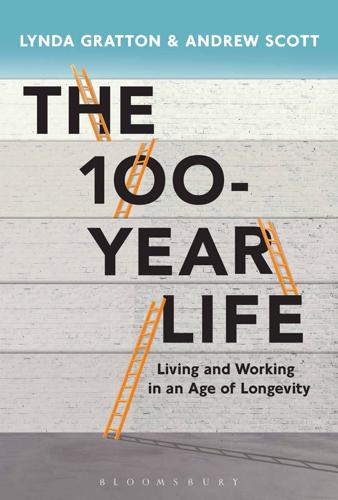
The 100-Year Life: Living and Working in an Age of Longevity
by
Lynda Gratton
and
Andrew Scott
Published 1 Jun 2016
See Magnus, G., The Age of Aging: How Demographics are Changing the Global Economy and Our World (Wiley, 2008). 2Gratton, L., The Key: How Corporations Succeed by Solving the World’s Toughest Problems (Collins Business, 2015). 3See for example Richard Florida’s view of the rise of the city, Who is your City? How the creative economy is making where you live the most important decision in your life and The Rise of the Creative Class (Basic Books, 2002). 4Deloitte, London Futures: London crowned business capital of Europe (UK Futures, 2015). 5Moretti, E., The New Geography of Jobs (Mariner Books, 2013). 6Costa, D. and Kahn, M. E., ‘Power Couples: Changes in the Locational Choice of the College Educated 1940–1990’, Quarterly Journal of Economics 115 (4) (2000): 1287–315. 7Johns, T. and Gratton, L., ‘The Third Wave of Virtual Work’, Harvard Business Review (2013). 8The fears over robots and artificial intelligence (AI) are much broader than just employment.
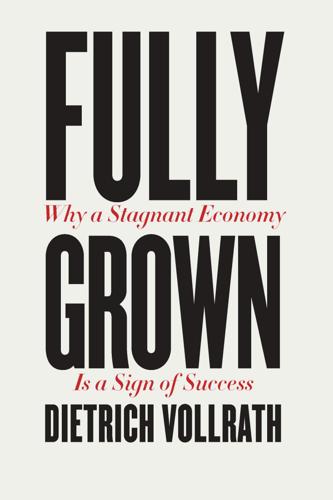
Fully Grown: Why a Stagnant Economy Is a Sign of Success
by
Dietrich Vollrath
Published 6 Jan 2020
“The Effect of Population Aging on Economic Growth, the Labor Force and Productivity.” Working Paper No. 22452, National Bureau of Economic Research, Cambridge, MA. Molloy, R., C. L. Smith, and A. Wozniak. 2011. “Internal Migration in the United States.” Journal of Economic Perspectives 25 (3): 173–96. Moretti, E. 2013. The New Geography of Jobs. Boston: Mariner Books. Moulton, B. R. 2018. The Measurement of Output, Prices, and Productivity: What’s Changed since the Boskin Commission? Technical report. Washington, DC: Hutchins Center of Fiscal and Monetary Policy. Murnane, R. J. 2013. “U.S. High School Graduation Rates: Patterns and Explanations.”
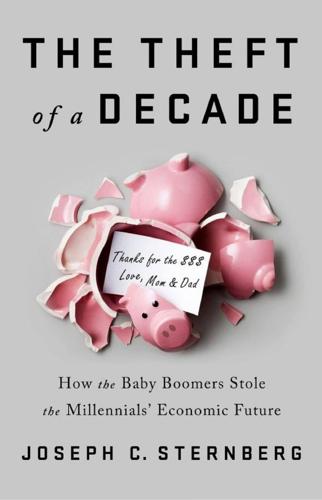
The Theft of a Decade: How the Baby Boomers Stole the Millennials' Economic Future
by
Joseph C. Sternberg
Published 13 May 2019
¶ In economics-speak, where the supply of new housing is “inelastic” because the market won’t or can’t produce new supply even when rising prices would normally prompt developers to build new properties for sale. * There’s a growing literature observing that job growth, and especially growth in the highest-paying jobs, is geographically clustered in a relatively small number of urban areas. See, for instance, Enrico Moretti’s book The New Geography of Jobs (New York: Houghton Mifflin Harcourt, 2012). † In an amortizing mortgage, each payment includes both an element of interest and a bit of principal. Typically the earliest payments are primarily interest, but over the life of the loan the proportion of each payment devoted to principal increases
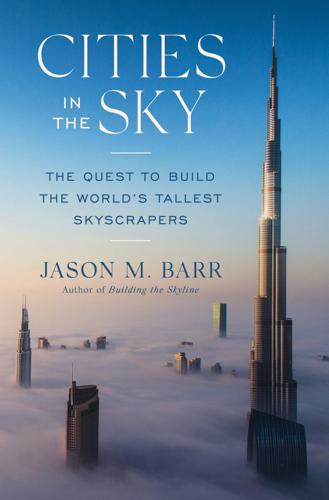
Cities in the Sky: The Quest to Build the World's Tallest Skyscrapers
by
Jason M. Barr
Published 13 May 2024
The Guardian, June 18, 2017. https://www.theguardian.com/technology/2017/jun/18/foxconn-life-death-forbidden-city-longhua-suicide-apple-iphone-brian-merchant-one-device-extract. Morgenstern, Joseph. “The Fifty-Nine-Story Crisis.” The New Yorker, May 21, 1995. https://www.newyorker.com/magazine/1995/05/29/the-fifty-nine-story-crisis. Moretti, Enrico. The New Geography of Jobs. Houghton Mifflin Harcourt, 2012. Mydans, Seth. “Malaysia Looks Down on World from 1,483 Feet.” New York Times, May 2, 1996. https://www.nytimes.com/1996/05/02/world/kuala-lumpur-journal-malaysia-looks-down-on-world-from-1483-feet.html. Nase, Ilir, Nick van Assendelft, and Hilde Remøy.
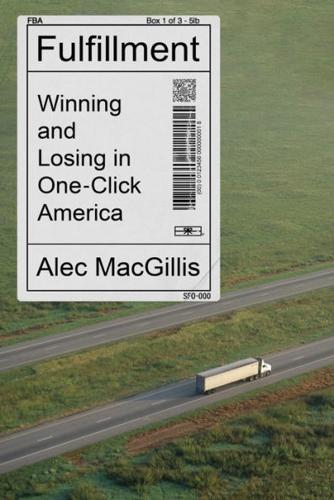
Fulfillment: Winning and Losing in One-Click America
by
Alec MacGillis
Published 16 Mar 2021
It was “the recruiting pool”: “Jeff Bezos at the Economic Club of Washington (9/13/18),” CNBC livestream, https://youtu.be/xv_vkA0jsyo. “Cities are effectively machines”: Geoffrey West, Scale: The Universal Laws of Growth, Innovation, Sustainability, and the Pace of Life in Organisms, Cities, Economies, and Companies (New York: Penguin, 2017), 323. “Economic value depends on talent”: Enrico Moretti, The New Geography of Jobs (New York: Mariner Books, 2013), 66. deliberately choosing one that had a garage: Brandt, One Click, 60. “This is not only the largest river”: Stone, The Everything Store, 55. “For me the city is still inarticulate”: D’Ambrosio, “Seattle, 1974,” 33. The average income for the top 20 percent: Gene Balk, “Seattle Hits Record High for Income Inequality, Now Rivals San Francisco,” The Seattle Times, November 17, 2017.

Evil Geniuses: The Unmaking of America: A Recent History
by
Kurt Andersen
Published 14 Sep 2020
Mishel, Lawrence, and Jessica Schieder. “CEO Pay Remains High Relative to the Pay of Typical Workers and High-Wage Earners.” Economic Policy Institute, July 2017. Mizruchi, Mark S. The Fracturing of the American Corporate Elite. Cambridge, Mass.: Harvard University Press, 2013. Moretti, Enrico. The New Geography of Jobs. Boston: Houghton Mifflin Harcourt, 2012. Morris, Ian. Why the West Rules—for Now: The Patterns of History, and What They Reveal About the Future. New York: Farrar, Straus & Giroux, 2010. Morrisey, Michael A. Health Insurance. Chicago: Health Administration Press, 2008. Murphy, Cullen.

Termites of the State: Why Complexity Leads to Inequality
by
Vito Tanzi
Published 28 Dec 2017
Mollenkamp, Carrick, Susanne Craig, Jeffrey McCracken, and John E. Hilsenrath, 2008, “Public Optimism Masked Private Scramble for Lehman,” The Wall Street Journal (October 7), p.6. Montesquieu, 1944, De L’esprit des lois, Volume I and II (Paris: Librairie Garnier Frères). Moretti, Enrico, 2013, The New Geography of Jobs (Boston and New York: Mariner Books). Morris Charles, R., 2012, The Dawn of Innovation (New York, NY: Public Affairs). Morrissey, Monique, 2013, “Private-sector Pension Coverage Fell by Half over Two Decades,” Econonic Policy Institute, Working Economics Blogs, January 11. Moser, Caroline O.

The Power Law: Venture Capital and the Making of the New Future
by
Sebastian Mallaby
Published 1 Feb 2022
.: Harvard University Press, 1994). BACK TO NOTE REFERENCE 3 By the same logic, clusters have deep pools of complementary companies: a router manufacturer seeking an esoteric microchip can find exactly the right sort of semiconductor design firm within a fifty-mile radius. See Enrico Moretti, The New Geography of Jobs (New York: Mariner Books, 2013), 126–27, 134. BACK TO NOTE REFERENCE 4 Granovetter’s 1973 article in The American Journal of Sociology, “The Strength of Weak Ties,” is the seventh most cited social science paper ever, according to an analysis of Google Scholar by Elliott Green of LSE.